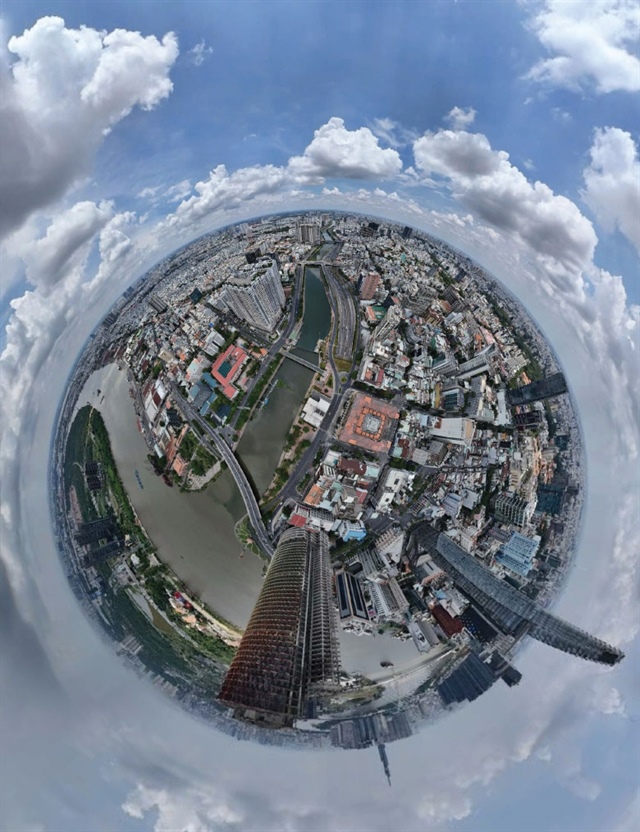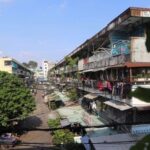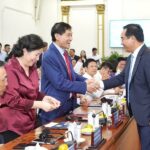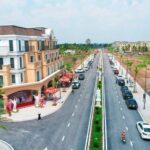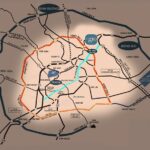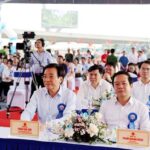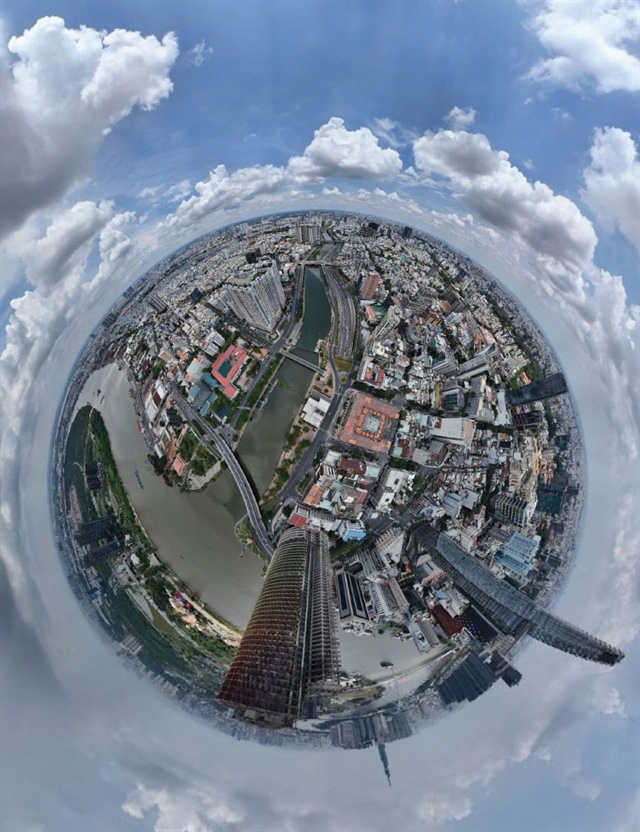
Positioning Ho Chi Minh City in the National Strategy |
The aspiration to develop Vietnam into a high-income country by 2045 is ambitious. On this journey, Ho Chi Minh City (HCMC) must play a pioneering role, serving as the most crucial growth driver and the central hub connecting Vietnam to the regional and global economy. A nation’s competitive advantage in the era of globalization is determined by the strength of its supercities. HCMC possesses the qualities and potential to become a formidable competitor to Asia’s leading metropolitan centers.
In a multipolar world with intense strategic competition, Vietnam should be positioned as a dynamic “buffer zone” and a trusted hub connecting major powers and economies vital to Vietnam’s development. HCMC is the ideal focal point for this objective. The city can become an attractive destination for high-quality investment, technology, and human resources from around the world, serving as an intermediary for parties to meet, collaborate, and conduct significant trade and financial transactions.
HCMC needs to take a central role in addressing critical national challenges, including: (i) establishing Vietnam as a focal point and intermediary in resolving economic issues and flows in a polarized world of superpowers; (ii) supporting the development of the “trough regions” of the Central Highlands and the Mekong Delta; and (iii) asserting Vietnam’s strategic position within ASEAN.
Vision of “One Center – Three Corridors”
A development vision for the next 100 years, with the strategic structure of “One Center – Three Corridors,” will provide feasible guidance and inspiration for HCMC and the entire country. HCMC will serve as the nucleus, not only economically but also culturally, scientifically, and technologically, fostering innovation.
Eastern Bank of the Saigon River – Heart of the East, Driving Force for International Integration
The development model’s focal point is the area east of the Saigon River. This location holds particular significance, offering a natural orientation towards the East Sea and direct connections to international maritime routes. It is home to high-tech parks, top universities, and research institutes, and it is the intersection of vital transportation infrastructure.
|
The development model’s focal point is the area east of the Saigon River. This strategic location offers a natural orientation towards the East Sea and direct connections to international maritime routes. It is a hub for high-tech parks, top universities, and research institutes, and it serves as the intersection of vital transportation infrastructure. |
With sufficient investment and seamless connectivity to crucial “satellites” such as Dong Nai (especially the Long Thanh airport area) and the current urban areas of Binh Duong, the eastern bank of the Saigon River will become a vibrant “heart,” a world-class financial, technological, commercial, and service center. This center will not only promote a sea-oriented economy and enhance integration but also create a powerful spillover effect towards the northeast, seamlessly connecting with the provinces of South Central Vietnam. This area is expected to provide a breakthrough growth impetus for HCMC and the entire country in the era of aspiration and realization of building a new “Singapore,” a “Pudong,” or an “Incheon” in Vietnam – iconic symbols of the remarkable rise of successful Asian cities and economies.
Three Strategic Corridors
From the center, three strategic corridors (Southwest, Northwest, and West) will extend, forming an encompassing and balanced development network.
The Southwest Corridor connects to the Mekong Delta. This direction is extremely important, not only because the Mekong Delta is the country’s rice bowl, fruit basket, and source of seafood but also because this region requires prioritized investment to narrow development gaps. The central government has identified this as a strategic direction and is focusing resources on infrastructure development. Integrating this corridor into the shared vision will create a strong resonance, effectively connecting HCMC’s industrial and service center with the Mekong Delta’s high-tech agricultural resources, while also reinforcing confidence and sustainable development orientation for the entire Southwest and Southeast regions.
The Northwest Corridor connects to the Central Highlands. This strategic move aims to “unlock” the potential of the Central Highlands, a region of significant geopolitical importance that still faces challenges and inadequate infrastructure. Forming a seamless connection from HCMC through the industrial centers of Binh Duong and Binh Phuoc to the Central Highlands will facilitate two-way transportation of goods (agricultural and mineral products from the Central Highlands to the ports, and industrial and consumer goods from the Southeast to the Highlands), attracting investment in processing industries, high-tech agriculture, tourism, and more, contributing to the sustainable development equation for the Central Highlands.
The West Corridor connects to ASEAN through Cambodia. This corridor opens a direct gateway to Cambodia and other mainland ASEAN countries. Investing in and upgrading transportation infrastructure, especially the HCMC-Moc Bai expressway and connecting railway lines, will boost border trade, attract investment to economic zones, enhance Vietnam’s role as a regional supply chain hub, and materialize the benefits of the ASEAN Economic Community (AEC).
Aspiring for a “Pudong” on the Eastern Bank of the Saigon River: Superior Models and Mechanisms
Transforming the eastern bank of the Saigon River into a world-class development center akin to Singapore, Pudong, or Incheon demands not only enormous investment resources but also breakthrough ideas in models and policy mechanisms. It entails combining “Singapore’s economic institutions with Vietnam’s national defense and security.”
The scale of this “special zone” should be approximately 650-700 square kilometers, equivalent to 10% of the expanded HCMC area, comparable to Singapore, Incheon, or the core development areas of Tokyo, Seoul, Jakarta, and Manila. This special zone necessitates the application of a highly competitive international institutional and policy framework: streamlined administrative procedures, a single-window mechanism, special tax incentives, flexible talent attraction policies, and greater autonomy in economic management.
Vietnam can learn from and creatively apply these experiences. The restructuring and reorganization of administrative units present a golden opportunity to implement such bold ideas. However, a practical and efficient approach is essential: instead of spreading resources over a vast area, focus on investing in areas with the most significant breakthrough potential, creating “growth poles” with radiating effects. This approach ensures efficient investment while avoiding unnecessary social disruptions.
Lessons from successful regions show that success stems not only from geographical advantages or investment capital but, more importantly, from a clear strategic vision, strong central support, and the establishment of a modern, flexible, and effective management system.
Addressing Infrastructure and Financial Resource Constraints
The two critical factors determining the success of this centennial vision are infrastructure and financial mechanisms.
Infrastructure Connectivity Revolution. The current congested and disjointed state of the transportation network connecting the HCMC region is the most significant impediment, undermining economic efficiency and quality of life. A genuine revolution in infrastructure investment is needed, with the following priorities:
First, complete the belt roads decisively. Belt Road 3 and Belt Road 4 are not just transportation routes but also new axes for urban, industrial, and logistics development, reshaping the region’s economic space.
Second, accelerate the construction of radial and inter-regional expressways. HCMC-Moc Bai, HCMC-Chon Thanh (connecting to the Central Highlands), and expressways to the Mekong Delta (Trung Luong-My Thuan-Can Tho, Ben Luc-Long Thanh, etc.).
Third, develop the railway system. Invest in the high-speed North-South railway (HCMC-Nha Trang section), and urban railways connecting the center with satellite cities and Long Thanh airport.
Fourth, position and develop the seaport and logistics system. Optimize the efficiency of ports in the region, especially the strategic role of Cai Mep- Thi Vai port. Additionally, developing modern logistics centers is crucial.
Fifth, develop digital infrastructure. This is one of the strategic infrastructures for modern economic forms in the future.
Financial Mechanism Breakthrough. The infrastructure investment demand is enormous, while the current financial mechanism is too constrained. HCMC requires innovative financial mechanisms to create sustainable resources. The following three issues need attention:
First, stronger budget decentralization. Grant HCMC greater autonomy in deciding revenue and expenditure items and, more importantly, in the mechanism for retaining revenues. The proposal to allow HCMC to retain a higher proportion of the annual increased budget is worth considering. This will provide a stable and predictable resource, enabling HCMC to proactively plan for long-term investments. This can be implemented by maintaining the status quo and only changing the distribution formula for the incremental portion.
Second, intelligent financial leverage. With the new budget distribution formula, incremental funds will be generated. HCMC can then use these funds as collateral to obtain preferential loans or issue local government bonds on a large scale (in the billions of US dollars) to implement key infrastructure projects in a “rolling” manner, achieving an infrastructure leap without waiting for annual accumulations. This approach “uses future money to invest in the present,” unlocking development potential.
Third, efficient land resource utilization (TOD) and socialization (PPP). Resolution 98 has opened up important legal opportunities. It is necessary to concretize and promote the application of the TOD model, recovering the increased land value resulting from infrastructure investment (especially metro lines) for reinvestment. Simultaneously,完善 the PPP mechanism to more effectively attract private investment into infrastructure projects, following the formula of “1 dollar of government investment can leverage 4-8 dollars of social investment.” If successful, this mechanism will help solve the housing equation and restructure a modern city with high competitiveness.
In conclusion, the “One Center – Three Corridors” vision is a long-term, breakthrough strategy for HCMC’s development. This vision is a way to realize the aspiration and strategy of soaring, as mentioned by General Secretary To Lam. The political determination to address institutional, infrastructure, and resource constraints will be the key to unlocking HCMC’s full potential and fulfilling its historic mission.
Huynh The Du
– 07:00 29/04/2025
The Ultimate Makeover: Unveiling the Revamped Ngo Gia Tu Apartment Project
The urgency of the situation demands swift action from District 10 authorities. The focus should be on finalizing compensation policies and relocation plans for residents affected by the Ngo Gia Tu apartment renovation project. With construction looming, timely and efficient execution of these plans is paramount.
“Proposed Discount Shopping Center in Ho Chi Minh City to Lure Tourists”
“Red tape is a significant hindrance to the growth and prosperity of Vietnam’s business community. This is according to the Chairman of the Business Association in Ho Chi Minh City, who highlights the cumbersome administrative procedures as a key issue facing enterprises today. The current bureaucratic red tape is stifling the dynamic and innovative spirit of businesses, hindering their ability to adapt, grow, and contribute to the country’s economic development.”
Entering a Price Appreciation Cycle, Thu Thua Real Estate is in High Demand
Riding the wave of booming investment in Long An, Thu Thua real estate – one of the top three industrial powerhouses of the province – is entering an accelerated growth cycle. With high expectations, the region is poised to rival established players in the market.
The Tân Vạn Interchange: Unlocking the East with a Billion-Dollar Infrastructure Boost
The Tan Van Interchange is an impressive feat of engineering and the largest and most complex interchange on the Ring Road 3. With a staggering investment of over VND 1,800 billion, it serves as a vital gateway for trade and commerce in the East region, seamlessly connecting Ho Chi Minh City, Di An, and Bien Hoa.

